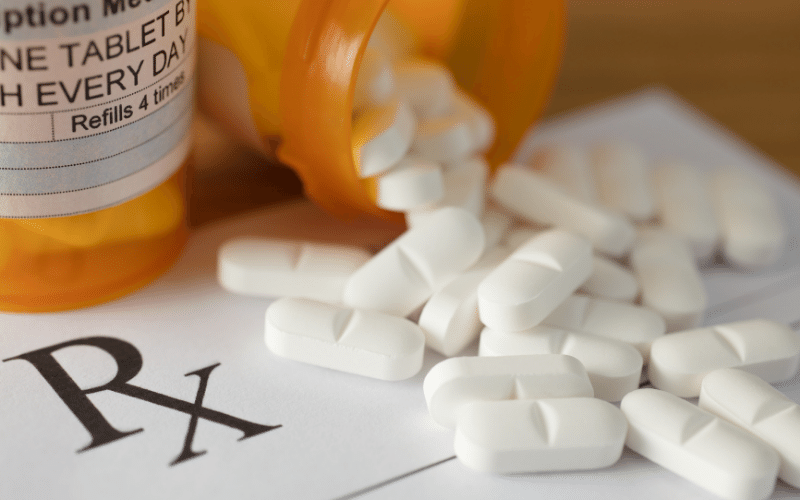In the United States, over 4 million people struggle with a borderline personality disorder. While borderline personality disorder (BPD) isn’t as discussed as other mental illnesses, it’s actually more prevalent than schizophrenia. What’s even more intriguing is that there’s an undeniable connection between borderline personality disorder and addiction. Not many treatment centers talk about it.
What Is Borderline Personality Disorder?
A borderline personality disorder is a mental illness that causes a distorted self-image, impulsiveness, extreme emotions, and unstable relationships. However, BPD is a highly misunderstood disorder that people confuse with mood swings or just an annoying personality. Those with BPD are often perceived as dependent, dramatic, and highly manipulative. However, these are traits they don’t indeed have control over. Eventually, the dissociation with what’s in their mind and reality turns too overwhelming, and people turn to substances to cope with the fear and emotional pain.
What Causes It?
The causes of BPD remain unknown, like many other mental illnesses. However, some attributes can impact the onset of this condition:
- Growing up in a dysfunctional family environment
- Early trauma of physical or sexual abuse
- Genetic predispositions
- Imbalances in brain chemistry
Of course, many other causes can onset the beginning of a mental health condition. Over 40% of those with borderline personality disorder are misdiagnosed with other disorders like bipolar disorder or labeled as experiencing a major depressive episode. However, almost 20% of people with BPD also have bipolar disorder, making their diagnosis and treatment more complicated than treating one disease.
The Overlap Between Borderline Personality Disorder and Addiction
Dual diagnosis, which happens when someone struggles with mental health and a substance use disorder simultaneously, is prevalent. In fact, almost two-thirds of those suffering from BPD also suffered from substance abuse at some point in their lives. Most BPD patients turn to drug abuse or alcohol to mask their symptoms and feel better overall.
The thing is that borderline personality disorder, and addiction is eerily similar. Both conditions show the same style of mood swings, self-destructive behaviors, and deceitful actions.
These similarities, unfortunately, make it difficult to diagnose both conditions separately. One condition often gets diagnosed first and treated, while the other one continues to interfere in the background. Given that those with BPD are already prone to emotional instability, adding drugs or alcohol abuse to the mix can make their behaviors and choices even more erratic. However, choosing a treatment program that treats both conditions simultaneously is key to long-term recovery.
Research shows that more extended treatment plans and longer stays in treatment can help those with BPD and addiction. However, the reality is that evidence shows most patients with borderline personality disorder leave rehab against medical advice.
Symptoms and Long-term Effects
When you look at BPD symptoms, you might as well think you’re reading symptoms of substance abuse. However, for years therapists have evaluated the signs and symptoms and conclude that the most common BPD symptoms are:
- Emotional swings
- Extreme episodes of anxiety or depression
- Suicidal behavior
- Extreme impulsive behavior
- Changes in perceptions of others
- Paranoia
- Bouts of extreme anger or aggression
- Intense fear of being alone
- Eating disorders
- Manipulative behaviors
- Feelings of emptiness
Without treatment, many BPD patients are left with low feelings of self-worth. Their impulsive behaviors often push family members and friends away, raising feelings of isolation. Also, those suffering from BPD are often unsure of their sense of self and are continually trying to change who they are to build relationships.
Borderline Personality Disorder and Addiction Treatment
Treating borderline personality disorder and addiction simultaneously is the most effective course of treatment. It’s paramount to incorporate psychotherapy and substance abuse treatment services that can help assess the situation better. Cognitive-behavioral therapy (CBT) can help manage the impulsive behaviors that happen with both conditions. It can also help patients stay away from addictive substances and teach them how to cope with triggering situations in the future.
Addiction and BPD can be treated on an inpatient or outpatient basis, depending on the disorders’ severity. Another evidence-based treatment for a borderline personality disorder is dialectical-behavior therapy (DBT). Because change can be balanced with self-acceptance, DBT helps individuals with severe psychiatric disorders build meaningful, stable lives.
The Importance of a Dual Diagnosis Program
Living with co-occurring disorders can be life-threatening. Integrated care is one of the most recommended approaches to treat dual diagnosis disorders, regardless of the co-occurring combination. These comprehensive rehabilitation programs offer medical, therapeutic, and holistic treatments to heal physically, emotionally, mentally, and spiritually.
While specific services will vary upon each person’s needs, most of the time, integrated treatment offers a range of treatment services to the individual, providing the person with everything necessary to heal on all levels.
According to Addiction Science & Clinical Practice, treatment goals of Dual Diagnosis therapy for treating BPD include:
- Helping the patient find motivation to make changes
- Teaching the patient coping mechanisms through mindful training
- Identifying and pursuing meaningful activities that promote a sense of connection to others
- Helping patients formulate attainable recovery goals
In addition, patients might need some medication-assisted treatment to help with their substance abuse. Many BPD patients benefit from medications that restore balanced levels of neurotransmitters. Simultaneously, some medicines can make the detoxification process from opioids, alcohol, and other substances more bearable to some patients, particularly those with co-occurring mental disorders. In this case, patients enter a medically-supervised detox facility that knows the type of treatment best suited for their needs and prevents addiction to these new substances.
Finding a Dual Diagnosis Program Near Me
The right treatment center can help people navigate their dual diagnosis. It’s paramount to find a dual diagnosis treatment center in Florida that follows a unique and individualized approach to treatment. Both addiction and mental illness are incredibly unique conditions that affect people differently; a cookie-cutter treatment plant won’t cut it.
Additionally, you might also want to consider a dual diagnosis treatment in Florida that offers a comprehensive treatment plan that incorporates alternative therapies. While the need for traditional, evidence-based therapies is key to recovery, incorporating holistic therapies can enhance the process and help people form the skills they’ll need to maintain sobriety and focus on their mental health after leaving treatment. In fact, one study found that holistic therapies, including relaxation techniques and Reiki, can help people manage physical pain and decrease adverse emotional reactions.
Lighthouse Recovery Institute is one of Florida’s best dual diagnosis treatment centers for its unique approach to treatment. From the first assessment, our team of addiction specialists and psychotherapists draft a comprehensive plan that adapts to your needs, and it’s built to be readjusted whenever needed as you make progress throughout the treatment.









